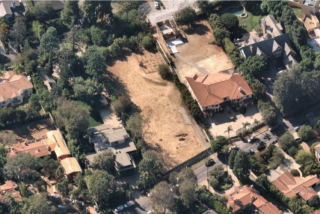Exploring Dynamics of Land-Use Planning : UCSB Extension course offers an opportunity to study the hows and whys of urban and regional policy-making.
Paul Mattson, a Ventura-based environmental planning expert, thinks now is the right time for a broad public discussion about how we use the land around here.
Although the La Conchita mudslides are an extreme example of our winter-long storm rampage, what were once rare and terrible weather conditions have become commonplace in the last five years.
These weather changes may raise public consciousness about city and regional planning--topics usually considered overly esoteric--and may shape our attitude about growth, forcing us to stop building in vulnerable areas or using certain materials, says Mattson, who teaches at the Environmental Studies Department at UC Santa Barbara.
“Planning in the ‘90s: Overview and Update,” which runs on Wednesdays from April 5 to June 21, will provide anyone who enrolls with a vivid look into the dynamics between nature, real estate, government and people.
If you don’t rush out and enroll, you can read the textbooks--or even look at a video. But now’s the time to look into this topic, which, according to Mattson, “people may not want to face but will have to try to find a way to get along with.”
Mattson’s course will cover the relationship between city and county planning and development agencies, plus how citizens, developers and local government boards interact with one other on a daily basis to shape our communities and our landscape--for better or worse.
Examples cited will range from extreme cases of people who build homes on the geologically unstable areas (including active volcanoes) to court decisions about zoning and nature preservation.
When Mattson said, “I’ll be working from the ecological point of view, discussing growth that’s managed so that it neither stagnates nor overloads the capacity of the setting,” I challenged him to cite an example where such utopian stuff is going on.
He referred me to several examples, including a place that’s been run this way for 20 years.
The Woodlands, a community near Houston, is an unincorporated area with a population half as big as the city of Ventura’s. Beginning a generation ago, folks began moving there with the goal of “increasing the value of (their) property by preserving and improving its environment,” according to a description published by the developer, The Woodlands Corp.
Last year the Urban Land Institute, a prestigious national body of land-use professionals, awarded Woodlands its Award of Excellence for “superior design, relevance to contemporary issues and needs, and resourceful use of land while improving the quality of the environment.”
Construction and landscaping of homes in The Woodlands--whether low-income government-assisted housing or other homes from $80,000 to $1 million--is subject to strict environmental policies. For instance, residents are encouraged to preserve native vegetation on their property Folks there are encouraged to use native plants for a “seasoned” look in a relatively short time and to make a prohibition on big lush lawns palatable. Water conservation is thus achieved.
In Portland, Ore., Mattson says, more than 1 million people may be affected by land-use planning policies that are based on living more compatibly with natural elements. An elected regional planning authority with power to override county and local zoning laws is developing a 50-year master plan, called “Region 2040,” with public input.
Mattson and a fellow Venturan William Fulton believe that we should consider something similar hereabouts. Fulton is author of a standard work on land-use, “Guide to California Planning,” and formerly taught Mattson’s course at UCSB Extension. Fulton was also a contributor to a recent Bank of America-sponsored study, “Beyond Sprawl: New Patterns of Growth to Fit the New California,” which advocates some of these environmental policies as a way to preserve property values in cities.
Details
* FYI: For the free report “Beyond Sprawl: New Patterns of Growth to Fit the New California,” call Bank of America at (415) 953-1411. For “Guide to California Planning” call (707) 884-4508. “Planning in the ‘90s: Overview and Update,” a course in land-use and environmental planning, is offered through UCSB Ventura Continuing Education and begins April 5; tuition is $325; call 644-7261.
More to Read
Sign up for Essential California
The most important California stories and recommendations in your inbox every morning.
You may occasionally receive promotional content from the Los Angeles Times.









